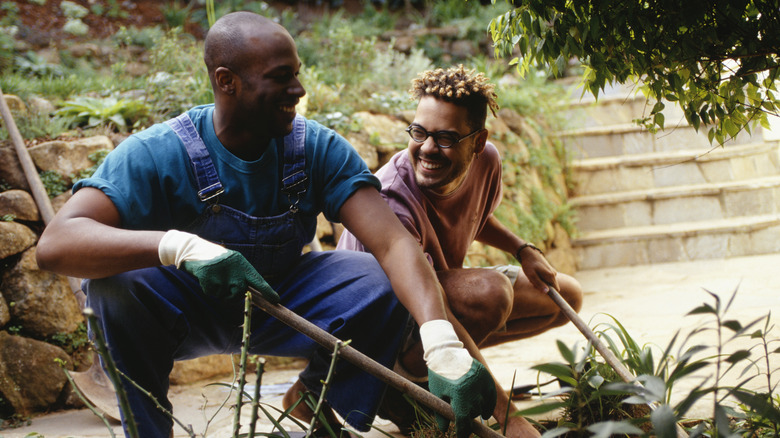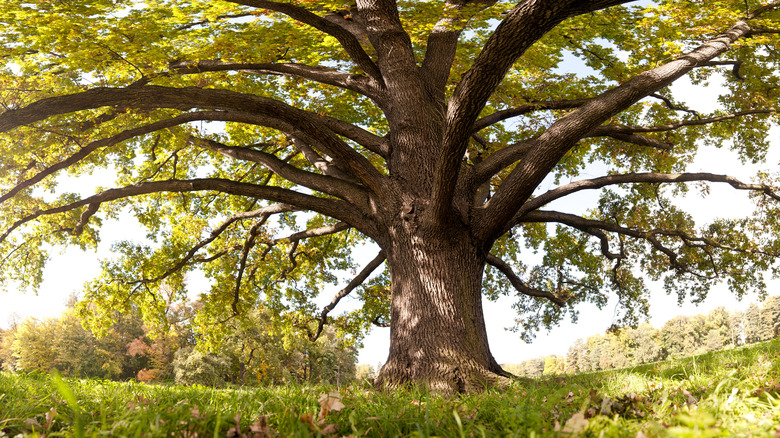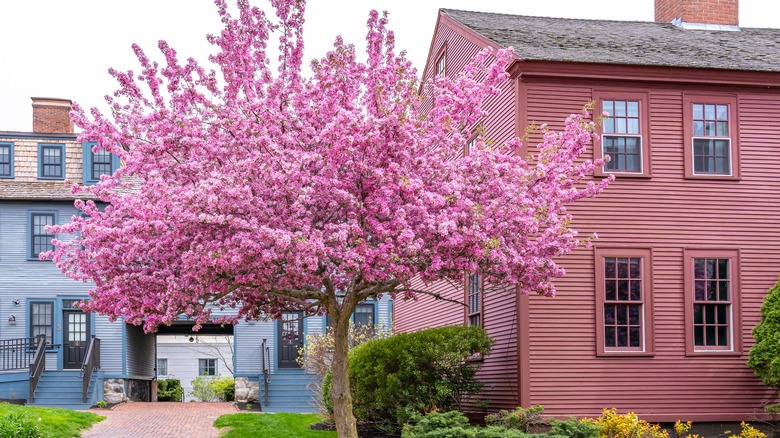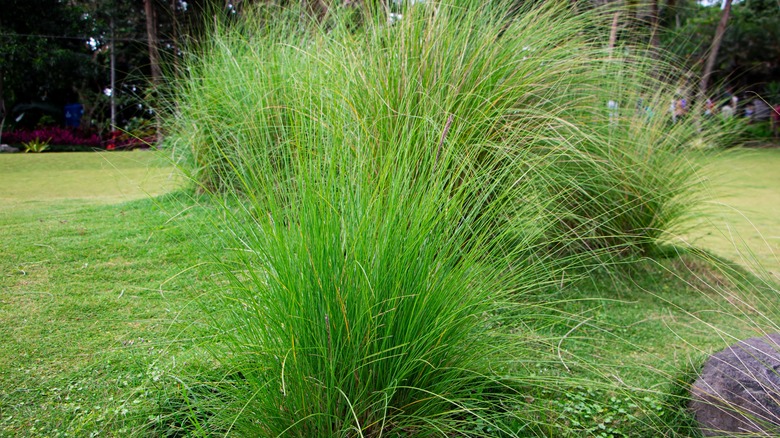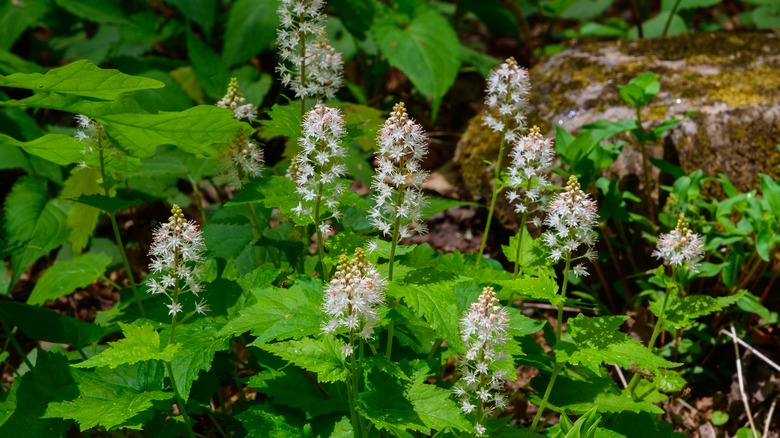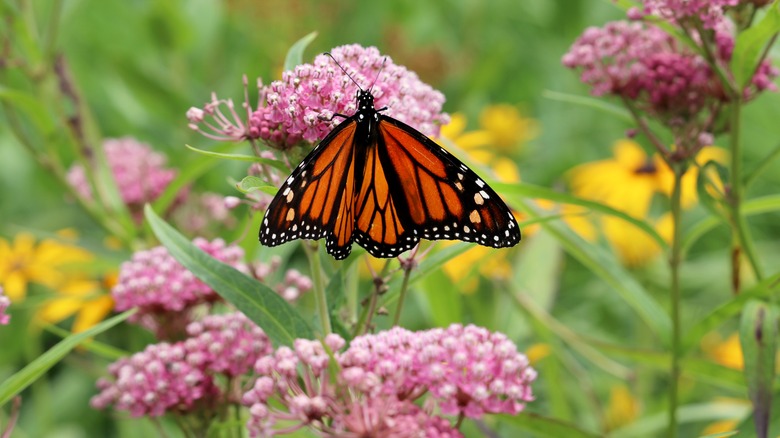Celebrate National Gardening Week By Planting These Gorgeous Natives
Every year during the first week of June is one of my favorite celebrations: National Gardening Week! There are no giant meals to cook and no presents to buy (unless you want to buy plants, which I totally support!). It's just me, maybe a few gardening friends, and a lot of beautiful soil. You can enjoy this week by taking classes, binging gardening shows, and working in your own garden. Perhaps my favorite way to encourage people to celebrate is to add at least one native plant or tree to their outdoor space. I have a few suggestions, including oak tree, redbud, prairie dropseed, foam flower, and milkweed species, but for an extensive list of natives in your area, contact your local Extension Office.
In 1981, "The National Gardener" magazine encouraged readers to sign petitions for the creation of a National Gardening Week. A bill was introduced and passed by the House and Senate, then signed by President Ronald Reagan, to make April 13, 1986 the beginning of the first National Gardening Week. The proclamation was written and signed to encourage organizations to provide activities "to show our appreciation for the efforts and contributions of gardeners." Unfortunately, that proclamation was not signed until April 19, 1986, so the first National Gardening Week actually happened in 1987. Eventually, the National Garden Clubs, Inc. changed the date of National Gardening Week to the first week in June, and there are plenty of natives to plant at this time of year.
Native shade tree: The mighty oak
Though it may be humble, I can't think of a more steadfast tree than an American oak. There is no single species that is native to every region in the US, but with over 90 native species in this country alone, there is an American oak for all but the most extreme environments. Oak trees have been used worldwide for centuries to build everything from great ships to whiskey barrels and axe handles. They are highly sought after by those who use wood-burning stoves and others who specialize in wood crafts.
Not only are oaks valued for their shade and wood quality, but The National Parks Service calls these trees a "keystone species." Oak trees support more forms of life, including animals, birds, fungi, and bugs, than any other type of tree. No one knows for sure, but the oldest living oak in the US, and possibly the world, likely lives near Temecula, California. The Pechanga great oak is at least 2,000 years old. It's amazing to think that one simple little acorn could do so much.
Flowering tree: Remarkable redbuds
If you are looking for a native tree that tolerates shade, produces stunning color in the spring, and supports early-emerging beneficial insects, it's hard to beat the two native Redbud species: Eastern redbud (Cercis canadensis) and Western (a.k.a. California) redbud (Cercis occidentalis). The names may not be very unique, but at least they are easy to remember! These trees have many uses. According to the Arbor Day Foundation, Native Americans favored Western redbud wood for their bows. Early residents and settlers of North America used the flowers for food and medicine. Modern day folks like us can still harvest some of those stunning blooms to spruce up our salads.
Eastern redbuds are native in regions from USDA hardiness zones 4 to 9, reaching from northern Florida to parts of New England and as far west as Texas and Nebraska. Depending on the region and other factors, this species can grow up to 30 feet tall. The Western redbud has a much smaller native range and size. It can be considered a shrub or a tree, reaching a maximum height of 15 feet. While it can tolerate below-freezing temperatures, this species is only native to California, Arizona, and Utah.
Ornamental grass: Pleasant prairie dropseed
Many ornamental grasses tolerate a broad range of climates and soil conditions, so this is a category in which you can do some research to find your favorite option. For beauty and widespread native status, I like prairie dropseed (Sporobolus heterolepis). We don't think much about the benefit of native ornamental grasses, but this species is a host plant to six types of butterflies and moths. It's also considered endangered in Connecticut, Kentucky, Maryland, North Carolina, and Pennsylvania, so simply adding this plant to your landscape can help support your local ecosystem.
Prairie dropseed grows up to 4 feet tall at maturity in zones 3 through 9. This grass is native in regions of Arkansas up to North Dakota and the states in between. Although not native to these regions, it can still be planted throughout most of the eastern and central US as a beautiful addition to any landscape. The delicate tufted growth habit of this grass is even more stunning when it blooms in late summer, offering tiny pink-tinted flowers that give way to seeds, offering a food source for birds in fall and winter.
Ground cover: Heavenly heartleaf foamflower
A number of native groundcovers are beneficial to the ecosystem, like the wild violets I let grow in my yard, as well as Virginia creeper and white Dutch clover — you know, the plants you're constantly pulling out of your flower beds? I can't blame you for that, so I want to give you something to enhance the beauty of your landscape while benefiting the ecosystem. For its wildlife benefits and beauty, Heartleaf foamflower (Tiarella cordifolia) has captured this gardener's heart.
It can be difficult to find blooming plants that thrive in full to partial shade, but this native features lobed, heart-shaped leaves with stems of delicate white blooms that emerge in the spring, providing an early source of food for bees and butterflies. Hardy in zones 4 to 9, heartleaf foamflower is native to regions in the Eastern US. Unlike many ground covers that seem to take over in no time, this plant spreads slowly, making it easy to control in a landscaped area.
Flower: Milkweed for monarchs
Choosing one flower as THE native to plant is next to impossible. There are just so many beautiful native options, so let me list a few before I settle on my single favorite. I like to plant native columbine to attract hummingbirds, and purple coneflower grows almost anywhere while supporting a host of native insects. If I must choose just one type of flower to recommend adding to your landscape for National Gardening Week, it has to be native milkweed.
Perhaps it's cheating a bit, but like oak trees, there are many species of milkweed, and each type is native to a different region. Of all the single species plants on this list, common milkweed (Asclepias syriaca L.) has the broadest native range, including states from the East Coast to the West coast and southern Texas to North Dakota. Every species of milkweed, even tropical species that are not native to the US, are host plants for monarchs, which you can even use to raise monarchs indoors.
However you choose to celebrate National Gardening Week, remember that a garden does not have to be perfect to be beautiful. Take some time to enjoy your outdoor space exactly as it is, even if it's always a work in progress — like mine.
